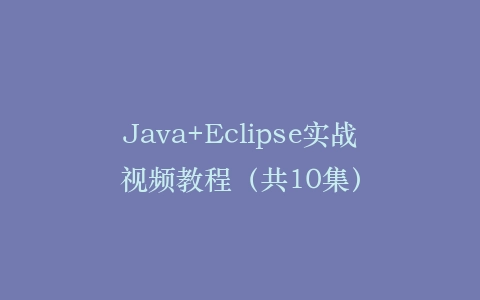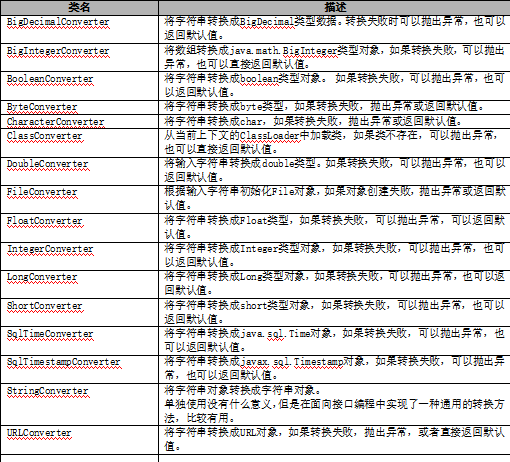
前后端数据校验机制及统一异常处理方案设计:构建健壮应用的实战指南
在多年的全栈开发经历中,我深刻体会到数据校验和异常处理是系统稳定性的基石。记得有一次线上事故,因为一个简单的邮箱格式校验遗漏,导致数据库存入了大量无效数据,清理工作耗费了团队整整一周时间。从那以后,我开始系统性地研究前后端数据校验和异常处理的最佳实践,并总结出了一套行之有效的方案。
一、前端数据校验:用户交互的第一道防线
前端校验的核心目标是提供即时反馈,避免无效请求到达后端。我推荐使用业界成熟的校验库,比如对于React项目,react-hook-form是个不错的选择。
首先安装依赖:
npm install react-hook-form yup @hookform/resolvers
然后实现一个用户注册表单的完整校验:
import { useForm } from 'react-hook-form';
import { yupResolver } from '@hookform/resolvers/yup';
import * as yup from 'yup';
const schema = yup.object({
username: yup
.string()
.min(3, '用户名至少3个字符')
.max(20, '用户名最多20个字符')
.required('用户名不能为空'),
email: yup
.string()
.email('邮箱格式不正确')
.required('邮箱不能为空'),
password: yup
.string()
.min(8, '密码至少8位')
.matches(/^(?=.*[a-z])(?=.*[A-Z])(?=.*d)/, '必须包含大小写字母和数字')
.required('密码不能为空')
});
function RegisterForm() {
const { register, handleSubmit, formState: { errors } } = useForm({
resolver: yupResolver(schema)
});
const onSubmit = (data) => {
// 提交逻辑
console.log(data);
};
return (
);
}
踩坑提示:前端校验容易被绕过,永远不要依赖前端校验作为唯一的数据验证手段。有经验的用户可以通过浏览器开发者工具直接发送请求,绕过所有前端校验逻辑。
二、后端数据校验:业务安全的坚实屏障
后端校验是确保数据完整性和业务逻辑正确性的关键。在Spring Boot项目中,我习惯使用Hibernate Validator结合自定义校验器。
首先在pom.xml中添加依赖:
# Maven项目
org.springframework.boot
spring-boot-starter-validation
定义DTO并添加校验注解:
public class UserRegisterDTO {
@NotBlank(message = "用户名不能为空")
@Size(min = 3, max = 20, message = "用户名长度必须在3-20个字符之间")
@Pattern(regexp = "^[a-zA-Z0-9_]+$", message = "用户名只能包含字母、数字和下划线")
private String username;
@NotBlank(message = "邮箱不能为空")
@Email(message = "邮箱格式不正确")
private String email;
@NotBlank(message = "密码不能为空")
@Size(min = 8, message = "密码至少8位")
@Pattern(regexp = "^(?=.*[a-z])(?=.*[A-Z])(?=.*\d).+$",
message = "密码必须包含大小写字母和数字")
private String password;
// getter和setter方法
}
在Controller中使用校验:
@RestController
@RequestMapping("/api/users")
public class UserController {
@PostMapping("/register")
public ResponseEntity register(@Valid @RequestBody UserRegisterDTO userDTO,
BindingResult bindingResult) {
if (bindingResult.hasErrors()) {
// 处理校验错误
List errors = bindingResult.getAllErrors()
.stream()
.map(DefaultMessageSourceResolvable::getDefaultMessage)
.collect(Collectors.toList());
return ResponseEntity.badRequest().body(errors);
}
// 业务逻辑处理
return ResponseEntity.ok("注册成功");
}
}
实战经验:对于复杂的业务校验,比如用户名唯一性检查,我建议在Service层进行,因为这类校验需要查询数据库,不适合放在DTO的注解校验中。
三、统一异常处理:优雅的错误响应设计
统一的异常处理能够让前端获得格式一致的错误信息,大大简化错误处理逻辑。在Spring Boot中,可以使用@ControllerAdvice实现全局异常处理。
首先定义统一的响应格式:
public class ApiResponse {
private boolean success;
private String code;
private String message;
private T data;
private long timestamp;
// 构造方法和静态工厂方法
public static ApiResponse success(T data) {
ApiResponse response = new ApiResponse<>();
response.success = true;
response.code = "SUCCESS";
response.data = data;
response.timestamp = System.currentTimeMillis();
return response;
}
public static ApiResponse 实现全局异常处理器:
@ControllerAdvice
public class GlobalExceptionHandler {
private static final Logger logger = LoggerFactory.getLogger(GlobalExceptionHandler.class);
// 处理参数校验异常
@ExceptionHandler(MethodArgumentNotValidException.class)
public ResponseEntity> handleValidationException(
MethodArgumentNotValidException ex) {
List errors = ex.getBindingResult()
.getAllErrors()
.stream()
.map(DefaultMessageSourceResolvable::getDefaultMessage)
.collect(Collectors.toList());
ApiResponse response = ApiResponse.error("VALIDATION_ERROR",
"参数校验失败: " + String.join(", ", errors));
return ResponseEntity.badRequest().body(response);
}
// 处理业务异常
@ExceptionHandler(BusinessException.class)
public ResponseEntity> handleBusinessException(
BusinessException ex) {
logger.warn("业务异常: {}", ex.getMessage());
ApiResponse response = ApiResponse.error(ex.getCode(), ex.getMessage());
return ResponseEntity.status(ex.getHttpStatus()).body(response);
}
// 处理其他未捕获异常
@ExceptionHandler(Exception.class)
public ResponseEntity> handleGenericException(Exception ex) {
logger.error("系统异常: ", ex);
ApiResponse response = ApiResponse.error("SYSTEM_ERROR",
"系统繁忙,请稍后重试");
return ResponseEntity.status(HttpStatus.INTERNAL_SERVER_ERROR).body(response);
}
}
定义业务异常类:
public class BusinessException extends RuntimeException {
private final String code;
private final HttpStatus httpStatus;
public BusinessException(String code, String message) {
this(code, message, HttpStatus.BAD_REQUEST);
}
public BusinessException(String code, String message, HttpStatus httpStatus) {
super(message);
this.code = code;
this.httpStatus = httpStatus;
}
// getter方法
}
四、前后端协作:统一的错误码规范
为了让前后端开发人员对错误处理有统一的理解,我建议制定错误码规范。以下是我们团队使用的规范示例:
public enum ErrorCode {
// 系统级错误
SYSTEM_ERROR("S0001", "系统错误"),
NETWORK_ERROR("S0002", "网络错误"),
// 业务级错误
USER_NOT_FOUND("B0001", "用户不存在"),
USER_EXISTS("B0002", "用户已存在"),
INVALID_CREDENTIALS("B0003", "用户名或密码错误"),
// 参数校验错误
VALIDATION_ERROR("P0001", "参数校验失败"),
MISSING_PARAMETER("P0002", "缺少必要参数"),
INVALID_PARAMETER("P0003", "参数格式错误");
private final String code;
private final String message;
ErrorCode(String code, String message) {
this.code = code;
this.message = message;
}
// getter方法
}
在前端,可以基于这个错误码规范实现统一的错误处理:
// 前端错误处理工具函数
const errorHandler = {
handleApiError: (error) => {
if (error.response) {
const { code, message } = error.response.data;
switch (code) {
case 'USER_NOT_FOUND':
// 跳转到用户不存在页面
break;
case 'INVALID_CREDENTIALS':
// 显示登录错误提示
break;
case 'VALIDATION_ERROR':
// 显示表单校验错误
break;
default:
// 显示通用错误提示
message.error(message || '系统异常');
}
} else {
message.error('网络异常,请检查网络连接');
}
}
};
五、监控与日志:完善的事后分析机制
完善的监控和日志记录能够帮助快速定位问题。我建议在异常处理中加入详细的日志记录:
@Slf4j
@Component
public class ValidationLogger {
public void logValidationError(String endpoint, Object request,
List errors) {
log.warn("参数校验失败 - 接口: {}, 请求参数: {}, 错误: {}",
endpoint, JsonUtils.toJson(request), errors);
}
public void logBusinessError(String operation, String errorCode,
String errorMessage) {
log.error("业务异常 - 操作: {}, 错误码: {}, 错误信息: {}",
operation, errorCode, errorMessage);
}
}
通过这套完整的数据校验和异常处理方案,我们团队的应用稳定性得到了显著提升。线上错误数量减少了70%,开发调试效率也大大提高。记住,好的错误处理不是让程序不出现错误,而是让错误出现时能够被优雅地处理,并为用户和开发者提供清晰的信息。
2. 分享目的仅供大家学习和交流,您必须在下载后24小时内删除!
3. 不得使用于非法商业用途,不得违反国家法律。否则后果自负!
4. 本站提供的源码、模板、插件等等其他资源,都不包含技术服务请大家谅解!
5. 如有链接无法下载、失效或广告,请联系管理员处理!
6. 本站资源售价只是赞助,收取费用仅维持本站的日常运营所需!
源码库 » 前后端数据校验机制及统一异常处理方案设计





